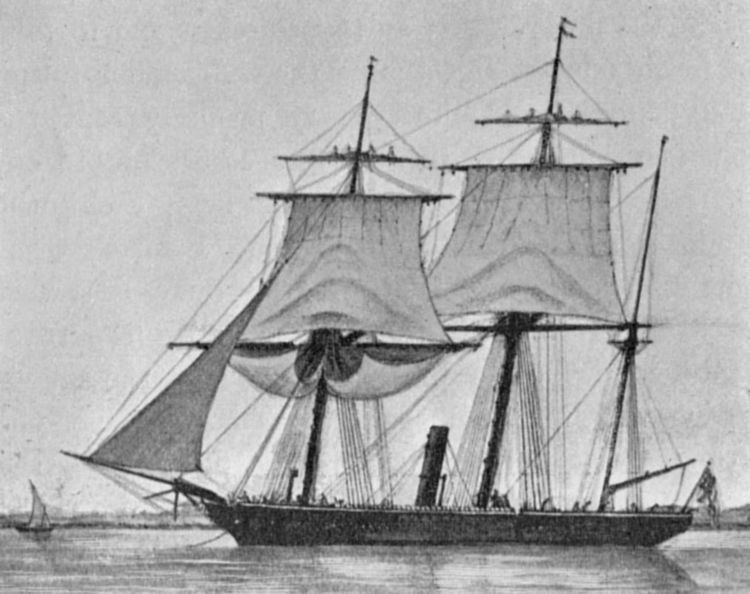Built 1855-1856 | In commission 1856–1872 | |
 | ||
Name Vigilant-class gunvessels Builders C J Mare & Company, LeamouthR & H Green, Blackwall YardJ & R White, CowesWigram & Son, Blackwall YardYoung, Magnay & Co, LimehouseFletcher & Fearnall, Limehouse Cost £27,437 (Foxhound) - £33,906 (Renard) | ||
The Vigilant-class gunvessel of the Royal Navy was an enlarged version of the Arrow-class gunvessel of 1854. Both classes were designed for shallow-water operations in the Baltic and Black Seas during the Crimean War. Fourteen of the class were completed, but were ready too late to take part in that conflict. Cormorant was sunk in action at the Taku Forts, Osprey was wrecked on the coast of Africa in 1867 and the rest were all sold during the 1860s, with Sparrowhawk lasting until 1872.
Contents
Design
The class were designed as second-class despatch and gunvessels. They were intended to operate close inshore during the Crimean War and were essentially enlarged versions of the Arrow-class gunvessel, which has been designed by the Surveyor’s Department in 1854.
Propulsion
A two-cylinder horizontal single expansion steam engine produced (varying between vessels) between 593 ihp (442 kW) and 778 ihp (580 kW) through a single screw, and gave a top speed of about 11 knots.
Sail plan
All Vigilant-class gunvessels were barque-rigged.
Armament
Although designed with a pair of 68-pounder Lancaster muzzle-loading rifles, the Vigilant class were finished with one 7-inch (180 mm)/110-pound (50 kg) Armstrong breech-loading gun, one 68-pound (31 kg) Lancaster muzzle-loading rifled gun and two 20-pounder breech loaders.
